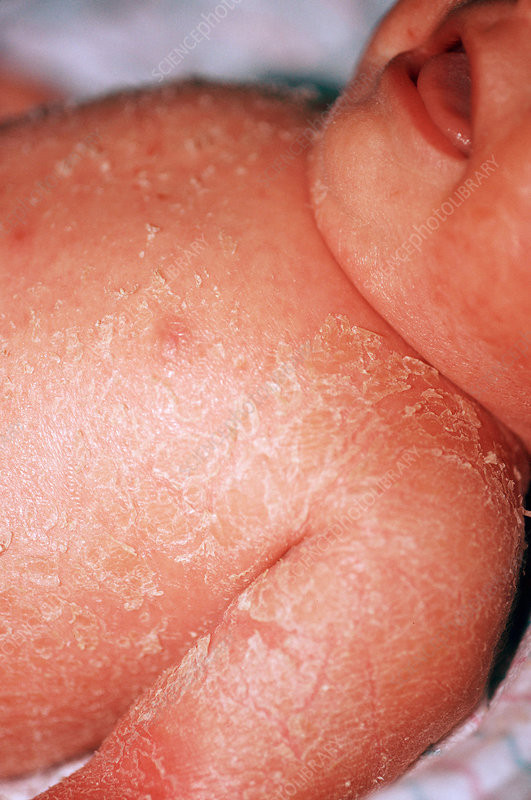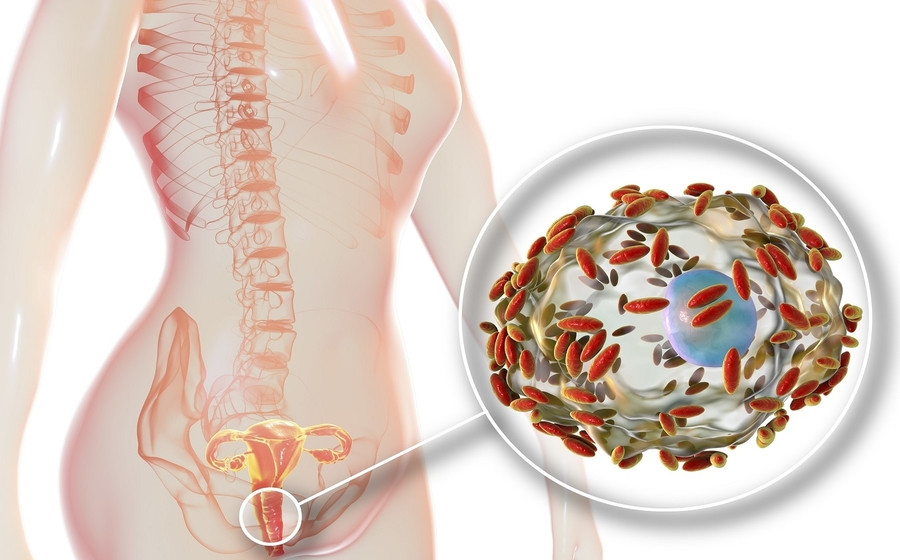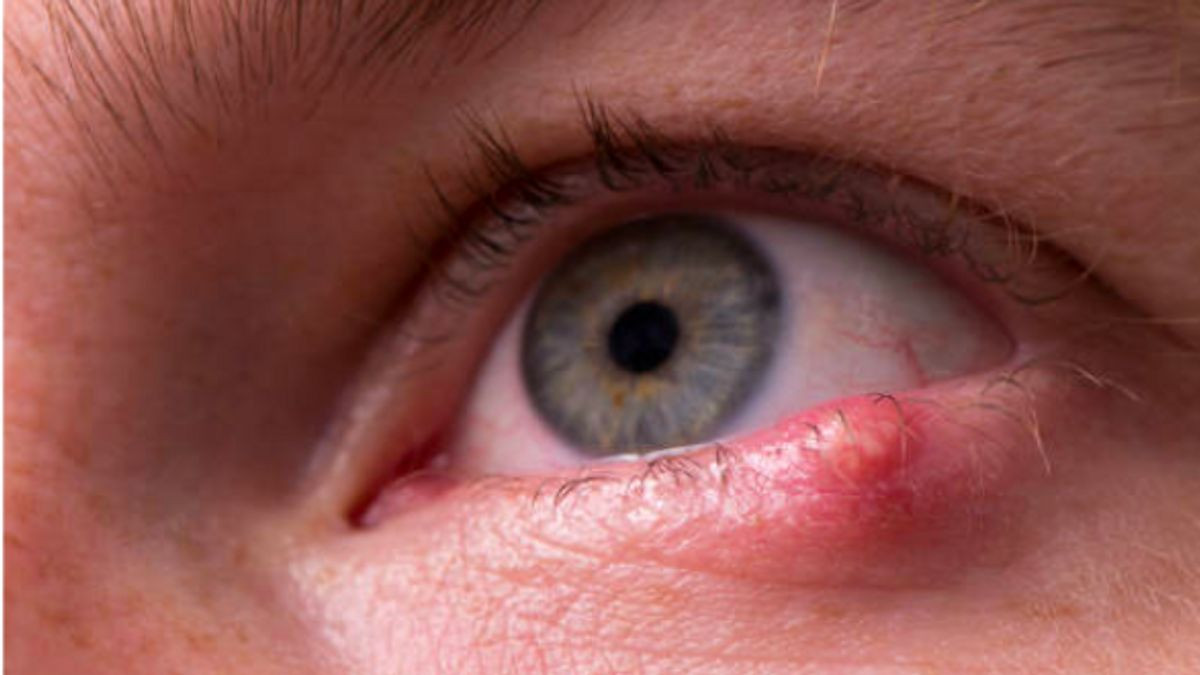Definisi
Staphylococcal Scalded Skin Syndrome (SSSS) adalah suatu infeksi bakteri pada kulit yang serius. Infeksi ini disebabkan oleh sejenis bakteri yang bernama Staphylococcus aureus. Bakteri ini dapat menghasilkan racun eksfoliatif yang menyebabkan lapisan luar kulit mengelupas di sebagian besar tubuh, di mana kulit tampak seperti telah tersiram air panas atau terbakar oleh cairan panas. Penyakit ini juga sering disebut sebagai Ritter’s disease.
SSSS termasuk kasus infeksi yang jarang terjadi. Angka kejadiannya diperkirakan sebanyak 56 kasus dari 100.000 orang. Infeksi ini biasanya lebih sering terjadi pada bayi dan anak kecil di bawah usia enam tahun. Pada bayi baru lahir, perubahan kulit yang khas dapat terjadi di sekitar tali pusat atau di area popok. Pada anak-anak yang lebih besar dan orang dewasa, gejala umumnya berkembang pada badan, lengan, kaki, atau wajah. Infeksi ini juga dapat terjadi pada orang tua dengan gagal ginjal atau mereka yang memiliki sistem kekebalan tubuh yang lemah.
Penyebab
SSSS adalah suatu infeksi yang disebabkan oleh bakteri Staphylococcus aureus. Bakteri Staphylococcus aureus pada dasarnya termasuk jenis bakteri yang biasanya hidup pada tubuh manusia, seperti di hidung, selangkangan, ketiak, dan area tubuh lainnya. Pada sebagian besar kasus, bakteri ini tidak menyebabkan masalah atau hanya menyebabkan infeksi kulit ringan. Masalah akan muncul ketika bakteri masuk ke bagian tubuh yang lebih dalam melalui celah di kulit, khususnya ketika terdapat suatu luka.
Beberapa jenis bakteri Staphylococcus aureus dapat menghasilkan racun yang berjalan melalui aliran darah dan mengikat dengan protein pada lapisan luar kulit, yaitu desmoglein-1, yang penting bagi sel-sel lapisan luar kulit untuk menempel satu sama lain. Hal ini akan menyebabkan seluruh kulit menjadi merah, melepuh, dan pecah. Kebanyakan anak yang berusia di atas enam tahun memiliki antibodi terhadap racun ini dalam darah mereka yang dapat menghentikan hal ini terjadi. Namun, bayi dan anak kecil tidak memiliki antibodi terhadap racun tersebut dan ginjal mereka juga cenderung belum berkembang secara matang sehingga tidak bisa mengeluarkan racun.
Infeksi akibat Staphylococcus aureus biasanya akan menyebar melalui kontak langsung dari kulit ke kulit. Namun, infeksi juga dapat menyebar dengan menyentuh benda-benda yang telah terkontaminasi bakteri, seperti handuk atau barang pribadi lainnya. Bakteri juga dapat menyebar dari satu area tubuh ke area lain melalui tangan atau kuku yang kotor.
Faktor Risiko
Bayi baru lahir sangat rentan terhadap SSSS karena mereka tidak memiliki antibodi untuk melawan infeksi, dan ginjal mereka tidak dapat membantu membersihkan racun dari tubuh. SSSS jarang terjadi pada orang dewasa karena sebagian besar telah memiliki antibodi terhadap infeksi ini, tetapi orang dewasa dengan sistem kekebalan tubuh yang lemah juga mungkin berisiko, seperti pada:
- Penderita HIV, termasuk mereka yang menderita AIDS
- Orang yang sedang menjalani kemoterapi
- Orang yang mengonsumsi obat untuk menekan sistem kekebalan tubuh
- Penderita dengan fungsi ginjal yang buruk
- Penderita penyakit ginjal kronis
Gejala
Gejala SSSS biasanya dimulai dengan adanya demam, anak yang menjadi rewel, dan kemerahan pada kulit yang meluas. Dalam 24-48 jam kemudian akan terbentuk lepuh berisi cairan yang mudah pecah dan akan meninggalkan area kulit yang terlihat seperti luka bakar.
Karakteristik ruam SSSS meliputi:
- Kerutan seperti kertas tisu pada kulit diikuti dengan munculnya lepuh besar berisi cairan (bula) di ketiak, selangkangan, dan lubang tubuh seperti hidung dan telinga.
- Ruam dapat menyebar ke bagian lain dari tubuh termasuk lengan, kaki, dan badan. Pada bayi baru lahir, ruam sering ditemukan di area popok atau di sekitar tali pusat.
- Lapisan atas kulit akan mulai terkelupas dalam lembaran dan meninggalkan area kulit yang lembab, tampak kemerahan, dan lembut.
Gejala lain yang mungkin timbul termasuk:
- Nyeri di sekitar lokasi infeksi
- Kelemahan atau kelelahan
- Dehidrasi
- Kurang nafsu makan
- Lapisan atas kulit yang mudah terkelupas dengan sedikit gesekan atau tekanan
- Konjungtivitis (peradangan atau infeksi pada lapisan bening yang menutupi bagian putih bola mata)
- Sakit tenggorokan
Diagnosis
Dalam mendiagnosis SSSS, dokter akan mulai dengan melakukan wawancara dengan orang tua atau pengasuh anak. Dokter akan menanyakan gejala-gejala apa saja yang dialami, sejak kapan gejala dialami, bagaimana perkembangan ruam yang timbul, lokasi mana saja ruam timbul, serta faktor-faktor risiko yang mungkin berperan terhadap timbulnya SSSS. Selanjutnya, dokter akan melakukan pemeriksaan fisik dengan melihat langsung keadaan kulit yang terkena. Dokter mungkin juga akan menggosok kulit dengan lembut untuk memeriksa tanda Nikolsky, yaitu lepuh yang terbentuk sebagai respons terhadap sedikit tekanan. Selain itu, dokter juga mungkin akan melakukan pemeriksaan penunjang lainnya untuk membantu menegakkan diagnosis SSSS, seperti:
- Pemeriksaan apusan Tzanck
- Biopsi kulit, di mana dokter akan mengambil sedikit sampel kulit untuk diperiksa di laboratorium
- Kultur bakteri dari sampel kulit, darah, urine, atau tali pusat (pada bayi baru lahir)
Tata laksana
Tata laksana SSSS akan tergantung pada berbagai faktor, termasuk:
- Usia anak
- Riwayat kesehatan anak sebelumnya
- Kesehatan anak secara keseluruhan
- Seberapa parah gejala SSSS
Kebanyakan kasus SSSS biasanya memerlukan tata laksana rawat inap, karena pemberian antibiotik melalui suntikan umumnya diperlukan untuk membasmi infeksi bakteri, seperti golongan Flukloksasilin, Nafcillin, Oxacillin, Cephalosporin, dan Clindamycin. Vankomisin juga dapat digunakan pada infeksi yang dicurigai resisten terhadap methicillin (MRSA). Tergantung pada respons penderita terhadap pengobatan, antibiotik dapat diganti menjadi tablet (oral) dalam beberapa hari dan penderita dapat dipulangkan dari rumah sakit untuk melanjutkan perawatan di rumah. Pemberian obat kortikosteroid dapat memperlambat proses penyembuhan sehingga tidak diberikan kepada penderita SSSS.
Tata laksana SSSS lainnya dapat meliputi:
- Pemberian Parasetamol bila diperlukan untuk demam dan nyeri.
- Pantau dan pertahankan asupan cairan dan elektrolit.
- Perawatan kulit (kulit seringkali sangat rapuh). Petroleum jelly harus dioleskan untuk menjaga kelembapan kulit.
- Bayi baru lahir yang terkena SSSS biasanya dirawat di dalam inkubator.
Meskipun gejala-gejala SSSS dapat terlihat buruk, anak-anak umumnya akan pulih dengan baik dan penyembuhan biasanya terjadi dalam 5-7 hari setelah memulai pengobatan.
Komplikasi
SSSS pada umumnya akan membaik dengan penuh dalam 10 hari tanpa menyebabkan komplikasi. Namun, beberapa komplikasi mungkin terjadi, seperti:
- Syok
- Dehidrasi
- Bakteremia, yang terjadi ketika infeksi masuk ke dalam darah
- Sepsis, yang terjadi ketika tubuh merespon terhadap infeksi dengan merusak jaringannya sendiri
- Hipotermia
- Penyebaran infeksi
- Infeksi sekunder
Pencegahan
Bakteri Staphylococcus aureus dapat bertahan hidup pada suhu ekstrem, kekeringan, dan bahkan asam lambung. SSSS dapat dicegah dengan mencegah penyebaran bakteri, seperti dengan melakukan:
- Sering-sering mencuci tangan.
- Mandi setiap hari.
- Jaga agar luka dan ruam tetap bersih dan tertutup.
- Jangan berbagi handuk, seprai, atau barang pribadi jika ada anggota keluarga Anda yang terinfeksi.
Kapan Harus ke Dokter ?
Konsultasikan anak Anda ke dokter jika mengalami gejala-gejala yang mengarah ke SSSS.
Mau tahu informasi seputar penyakit lainnya? Cek di sini, ya!
- dr Nadia Opmalina
Brennan, Dan. What Is Scalded Skin Syndrome?. (2021). Retrieved 25 May 2022, from https://www.webmd.com/skin-problems-and-treatments/what-is-scalded-skin-syndrome
Christiano, Donna. Scalded Skin Syndrome. (2018). Retrieved 25 May 2022, from https://www.healthline.com/health/scalded-skin-syndrome
Oakley, Amanda. Staphylococcal Scalded Skin Syndrome. (2016). Retrieved 25 May 2022, from https://dermnetnz.org/topics/staphylococcal-scalded-skin-syndrome
Rehmus, Wingfield E. Staphylococcal Scalded Skin Syndrome. (2021). Retrieved 25 May 2022, from https://www.msdmanuals.com/professional/dermatologic-disorders/bacterial-skin-infections/staphylococcal-scalded-skin-syndrome
Veazey, Karen. What to Know About Staphylococcal Scalded Skin Syndrome. (2022). Retrieved 25 May 2022, from https://www.medicalnewstoday.com/articles/staph-scalded-skin-syndrome












